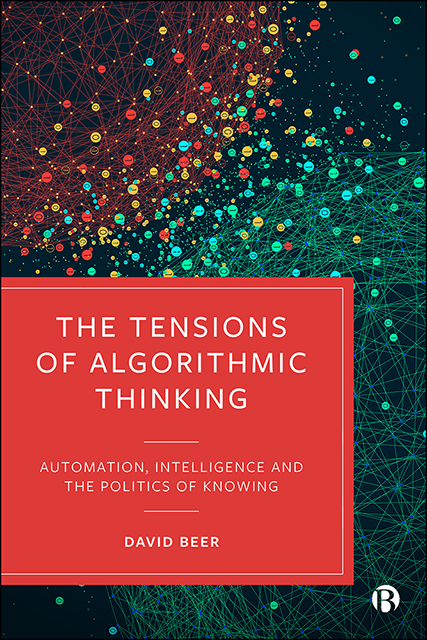Book contents
- Frontmatter
- Dedication
- Contents
- Acknowledgements
- 1 Introduction: Tense Thinking and the Myths of an Algorithmic New Life
- 2 The Pursuit of Posthuman Security
- 3 Overstepping and the Navigation of the Perceived Limits of Algorithmic Thinking
- 4 (Dreaming of) Super Cognizers and the Stretching of the Known
- 5 The Presences of Nonknowledge
- 6 Conclusion: Algorithmic Thinking and the Will to Automate
- References
- Index
2 - The Pursuit of Posthuman Security
Published online by Cambridge University Press: 21 June 2023
- Frontmatter
- Dedication
- Contents
- Acknowledgements
- 1 Introduction: Tense Thinking and the Myths of an Algorithmic New Life
- 2 The Pursuit of Posthuman Security
- 3 Overstepping and the Navigation of the Perceived Limits of Algorithmic Thinking
- 4 (Dreaming of) Super Cognizers and the Stretching of the Known
- 5 The Presences of Nonknowledge
- 6 Conclusion: Algorithmic Thinking and the Will to Automate
- References
- Index
Summary
In the summer of 2018 the technology company Hdac ran a television advert depicting their version of the ‘smart home’. With clean lines and neutral colours, the automated home space was a picture of hyper-functional minimalism. In many regards it was an entirely unremarkable advert – its style and tone were comparable with typical technology company promotions. Despite the familiar stylistic features, it was the advert’s very prominent mentions of ‘blockchain’ that was particularly notable. For the first portion of the advert a small message appeared at the bottom of the screen telling the viewer that ‘Hdac Technology is building the future with the blockchain solution’. This talk of future-building immediately returns us to Lefebvre’s impression of the new life as discussed in Chapter 1 – the blockchain home is also just around the corner, it would seem. Later in the advert the voiceover reiterates the central message, adding that the ‘Hdac Technology platform is smart and secure thanks to the blockchain solution’. This text appeared again at the bottom of the screen. It is clear that the main message of the advert is that blockchain is responsible for enabling the various visions of convenience and technological adaptability being depicted. The blockchain is also given responsibility for ensuring the security of these spaces. Despite its prominence in the messaging, the advert did not go on to say what blockchain was, nor did it mention its functionality or how it was to be applied. Blockchain instead seemed to stand in for a secure (while nonspecific) technical apparatus. Blockchain was itself the message. This advert is illustrative of how blockchain is associated with notions of ideal types of data security; it is also illustrative of how the term blockchain can even act as a byword for technical systems that ensure this security.
Given its unexplained insertion in this advert and the fact that it is a term that can be used without the need for definition, it would seem that the concept of blockchain has already become a fixture of a wider technological and perhaps even public and media discourse (as discussed in Chow-White et al, 2020). It is a recognizable term. It is an established signifier.
- Type
- Chapter
- Information
- The Tensions of Algorithmic ThinkingAutomation, Intelligence and the Politics of Knowing, pp. 11 - 39Publisher: Bristol University PressPrint publication year: 2022



